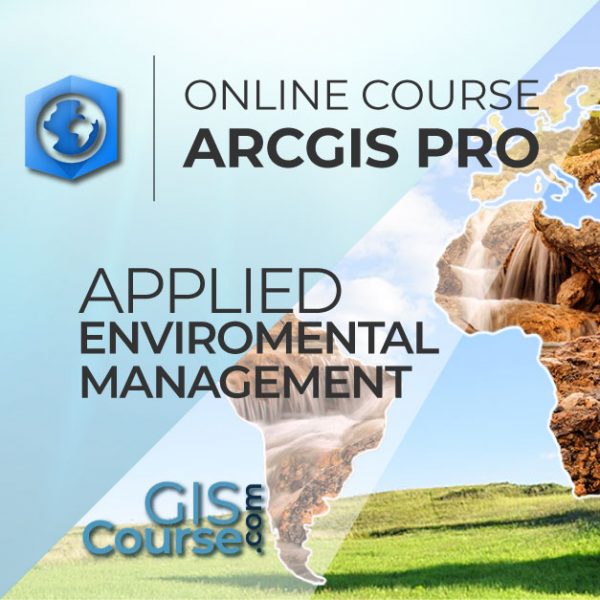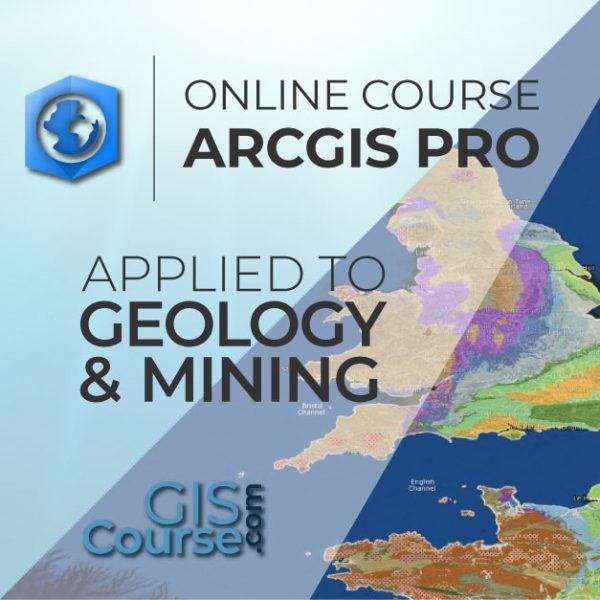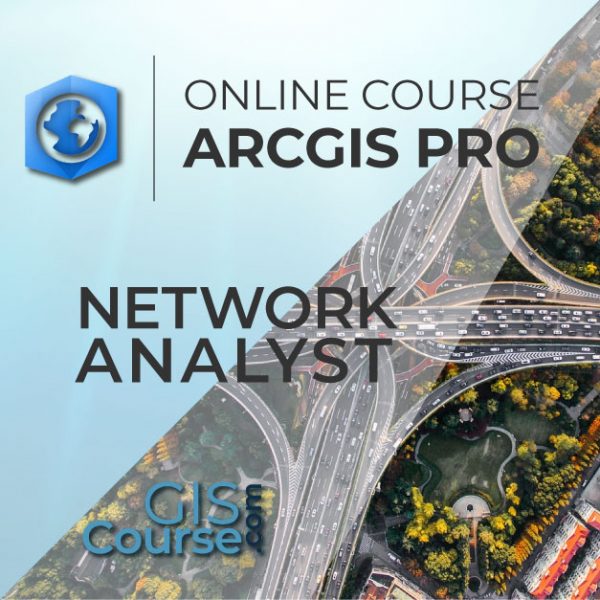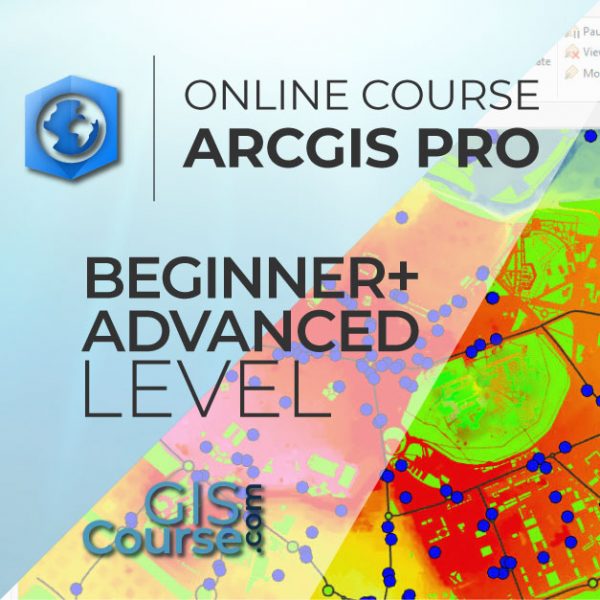ARCGIS PRO COURSE APPLIED TO ENVIROMENTAL MANAGEMENT
ONLINE TRAINING
START DATE: Available Soon
PRICE: 400€ (Standard fee) | 360€ (Student / Unemployed fee)
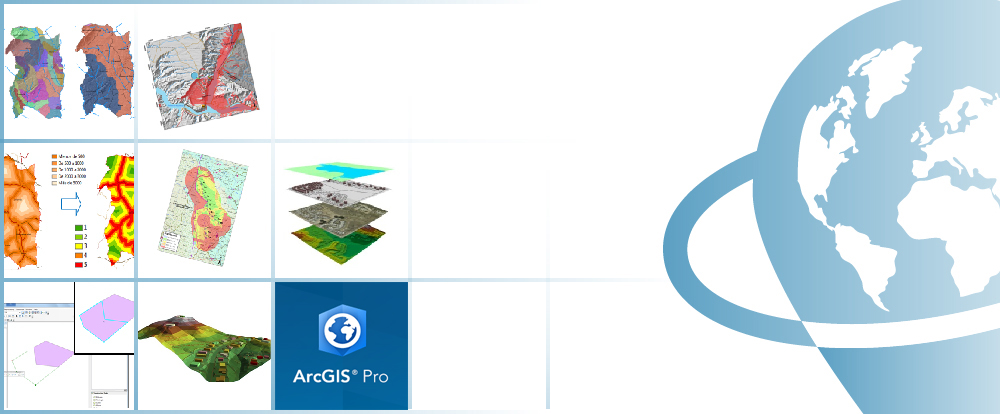
This ArcGIS Pro online course will provide a great deal of information about the link between earth’s ecosystems and human impact on the environment. During this course, the students will learn about the advanced GIS techniques using vector and raster data models, which are most commonly used in the elaboration of environmental projects.
Students will gain knowledge in the usage of ArcGIS PRO software with application in environmental studies (environmental impact studies, environmental documents, fauna studies, etc.). They will master the creation of high quality maps, spatial multi-criteria analysis for environmental management, project alternative studies, as well as how to perform least impact routing analysis.
Enrolled students in this online course will have access to our virtual e-learning platform (which is available 24 hours), where they will find the content of the course, practical exercises, forum discussion and additional content. One of the advantages of this online platform, is that students can benefit of real time support and assistance offered by the instructor (2 hours per week), whom they can contact via direct messages, regarding course related issues, at any moment. They can also contact the instructor via email.
- Demonstrate the importance and practicality of GIS in engineering and environmental management studies.
- Understand all the essential concepts, needed for an advanced manipulation of ArcGIS Desktop new release (ArcGIS PRO) and GIS in general, along with practical application in environmental management.
- Learn about GIS key tools used in the management of raster and vector data models, the creation of high quality cartography products and the development of complex spatial analysis.
- Find out about all the existing difficulties and solutions in the design of GIS environmental studies through practical exercises.
- Prepare and edit your own data, develop your own layouts and high quality map products for environmental impact studies, etc.
1 - INTRODUCTION TO GEOGRAPHIC INFORMATION SYSTEMS
- Introduction.
- Definition and basic concepts.
- Uses of Geographic Information Systems.
- Geographic information: vector data models, raster data models and other data models (CAD, TIN, etc.). Main features of each data module, advantages and disadvantages.
- Introduction to ArcGIS Pro.
- Arcmap interface, extensions and tools.
2 - VECTOR DATA MODEL. INFORMATION DISPLAY
- Information layers: how to add layers, features and attribute tables.
- Data tools: search and queries.
- Selection tools: selection per feature, selection by spatial location and information capture.
- Layer symbology: simple symbology, by category, by quantity and through graphs.
- Other display options: labelling and transparencies.
3 - COORDINATE SYSTEMS, PROJECTIONS AND GEOREFERENCING
- Introduction to Coordinate systems and projections.
- Defining Coordinate Systems.
- Coordinate system transformation. Reprojection of ED50 or ETRS89 geographic databases.
- Image, layer and CAD files georeferencing.
4 - VECTOR DATA MODEL. EDITING AND CREATING INFORMATION
- Creation and editing of spatial data.
– Creating spatial data: Editing tools bar. Digitization techniques
– Creating layers from CAD files
– Modifying existing layers
– Creating layers from coordinates and GPS data - Creation and editing of data from the attribute table
– Structure of an Attribute Table
– Types of data included in an Attribute Table
– Modify information from an Attribute table
– Calculate geometric information (surface, perimeter, length, etc.)
– Creation of statistics from an Attribute table
– Export tables to Excel and other formats. Reports and graphs creation
5 - DATABASE AND SPATIAL DATA BASE MANAGEMENT (GEODATABASE)
- Designing databases.
- Joining and relating databases.
- Spatial joins. Obtain statistics from database information and spatial position of elements in a layer.
- Geodatabase: Advantages. Properties.
- Loading data to the geodatabase. Subtypes and domains.
Guided exercise 1 (data collection): Collecting field data with GPS or coordinates manual, its processing and creating digital cartography linked to information gathered in the field, as well as in the office.
6 - SPATIAL ANALYSIS USING VECTOR DATA
- Extract (Clip, Split), overlay (intersect, union) and proximity toolsets (buffer analysis, Thiessen polygons).
- Obtain sampling grids.
- Multi-criteria analysis. Obtain optimum areas according to several criteria.
Guided exercise 2 (environmental surveillance): Creation of sampling grids and combining them with field data applied to the environmental surveillance of wind farms.
7 - SPATIAL ANALYSIS USING RASTER DATA
- File conversion tools. File format conversion from vector to raster, and viceversa, ASCII or html files, and exporting files to KML (Google Earth) as well as CAD.
- Create Digital Elevation Models from vector data, ASCII files and TIN files.
- Extracting information from raster files by query, mask, entity and / or joining raster files.
- Contour lines, slope calculation, hillshade maps, orientations and visibility studies.
Guided exercise 3 (landscape): Creating a visibility study through viewsheds from high precision digital terrain models, defining specific views and project elements.
8 - ADVANCED SPATIAL ANALYSIS
- Reclassifying raster files. Euclidean distances, building Boolean layers, adding values to intervals or categories, and data conversion.
- Map algebra (raster calculator), math calculations between raster layers, field statistics.
Guided exercise 3 (geomorphology/erosion): Territory erosion risk analysis through variables like slope, type of soil, presence of vegetation, etc.
- Data interpolation. Different interpolation methodologies (IDW, kriging, natural neighbour).
Guided exercise 4 (fauna and vegetation): Calculate density fauna and vegetation distribution by interpolating field and bibliographic data.
9 - ADVANCED SPATIAL ANALYSIS II
- Use in hydrology: obtaining a drainage system, flow direction, outlets, and identification of drainage basins.
Guided exercise 6 (hydrology): Obtain the drainage network, the main flow direction, accumulation areas and hydrographic basins, sub basins and micro basins.
- Volume calculation.
- Raster multi criteria analysis. Basic concepts and weightings. Weighted overlay. Non-compensatory analysis. Least cost route calculation.
Guided exercise 7 (selection of alternatives): Selecting a project alternative with smaller impact by multi criteria analysis of environmental variables.
Guided exercise 8 (selection of alternatives 2): Selecting a lineal construction route which will have the smallest environmental impact using multi criteria analysis.
10 - WEB INFORMATION SOURCES AND RESOURCES
- Downloading digital maps (IGN) and using WMS cartographic servers.
- Regional, European and international Spanish spatial data infrastructure (IDEE).
- Arcgis Online Services
11- MAP CREATION
- Adjusting the sheet.
- Inserting basic elements (north, scale bar, numeric scale, map legend, etc.)
- Adding UTM coordinates grid, composition with several “Data frames”, images, excel tables, etc.
- Including other elements: images, graphs and tables.
- Printing options.
Guided exercise 9 (map composition): Create quality mapping focused on environmental studies according to the INSPIRE directive.

Santiago Pardini Hernanz
With Bachelor’s degree in enviromental sciences from Almeria University and master in engineering and enviromental management from escuela de organización industrial (EOI), Santiago is a professional in the GIS consultancy sector and remote sensing at TYC GIS Integral Solutions.
Santiago has diverse specialist courses in geographic information systems, remote sensing, CAD and BIM. He has more than 7 years experience in application of those technologies in enviromental consultancy, diverse engineering companies, Geomarketing, spatial plannin, etc.
Why study ArcGIS Pro?
The usage of Geographic Information Systems (GIS) is rapidly growing, becoming an essential tool in a variety of business sectors like engineering, environment, geography, mining or geomarketing.
Among GIS tools, ArcGIS is one of the most used GIS software worldwide, the most stable and versatile, comprised by a set of integrated applications, with a solid documentation over a wide range of tools being also supported by a large community.
ArcGIS provides contextual tools for data visualization, mapping and spatial analysis, connecting and combining information from varied sources (local and online), offering complex capabilities in order to explore, gain and enquire knowledge, that will lead to the best decisions. It can be also handled using a user interface as well as in command line using specific programming languages, like Python.
Do I need previous knowledge in ArcGIS Pro?
Yes, you need to have knowledge similar to that taught in the ArcGIS Pro – Beginner Level Course.
I don’t have the ArcGIS Pro program. What can I do?
ArcGIS PRO software has a free trial license for a period of 21 days. You only need to create an account, download the program and follow the installation steps (see the website). However, we will assist you if you encounter any problem.
Our online courses, are distributed via Moodle, the world’s most popular learning platform. It is a highly flexible Learning Management System that can be used to conduct and access courses, accomplish tasks of practical exercises, interact face-to-face to the teaching staff or benefit of support and resources at any time.
The online platform can be accessed 24 hours a day, in which the student will be able to ask for help at any given moment. The instructors will act as supervisors during all the training process, offering support for any possible difficulty encountered by the students along the course.
The course is structured in different modules, making it easy for the student to search for training material, download information, complete practical exercises and take assessments in order to verify their new gained abilities. The instructors will assist the students throughout all the course period, offering progressive help and information according to their evolution.
500€ (Standard fee) / 450€ (Student / Unemployed fee)*
*To enjoy this discount, you must include a copy of a document that proves your situation along with the registration form.
** Si desea conocer el precio en otras monedas, puede consultarlo en el siguiente conversor online: The Money Converter

1st step. Request your registration to the training course completing the pre-registration document and sending it via email to training@tycgis.com.

2nd step. As soon as we receive it, we will send you an enrolment guide with the complete information to enrol in the course: dates, schedule, software needed for the course and the installation guide. The payment methods are included in this document.

4rd step. Once we receive the receipt, we will confirm your registration to the course via email.

NATIONAL WIRE TRANSFERS (INSIDE SPAIN)
ACCOUNT NUMBER: 0049 1809 222710347481 (Banco Santander)
BENEFICIARY: TYC GIS Soluciones Integrales SL
SUBJECT: “Student Name” and GIS ENVIRON COURSE ON
INTERNATIONAL WIRE TRANSFERS:
BANK NAME: Banco Santander
BANK ADDRESS: Glorieta Ruiz Jiménez 1, 28015 Madrid (España).
BENEFICIARY: TYC GIS Soluciones Integrales SL
BENEFICIARY ADDRESS: Calle Fuencarral 158, Entreplanta, Oficina 16-17 28010 Madrid (España).
ACCOUNT NUMBER: ES90 0049 1809 222710347481
SWIFHT: BSCHESMM – IBAN: ES90
If you have payment difficulties, contact us





 (5 votes, average: 4.20 de 5)
(5 votes, average: 4.20 de 5)